This post was originally published in April of 2021. We figured now would be a good time to share this post again, considering how plug building is a popular wintertime activity.
Wooden lure making is a passion for many anglers, and today we have a brand new interview all about making wooden lures.
If you've ever been interested in learning more about plug building and wooden lure making, then this podcast is for you.
On this podcast we speak with My Fishing Cape Cod member Anthony Besaw (pictured below).
More...
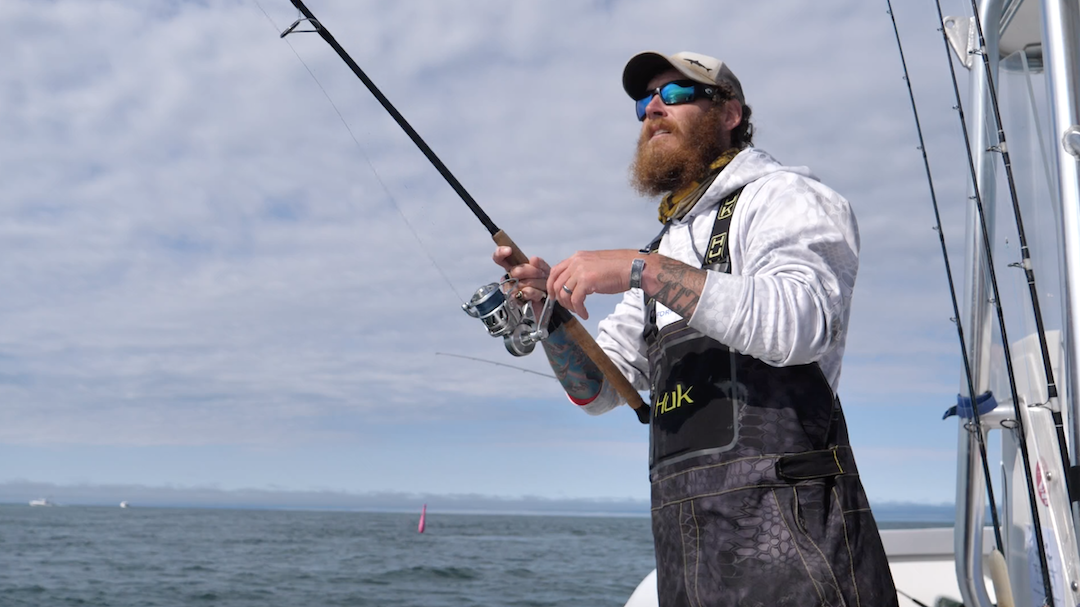
Anthony is a frequent poster inside our plug building forum, and he often shares tips and advice about making your own wooden plugs.
A full written transcript of this podcast, with accompanying photos of some of Anthony's work, is included below.
Please click play to listen in!
Podcast Transcription
Kevin (00:26):
Well, hello and welcome to another edition of the My Fishing Cape Cod Podcast here from myfishingcapecod.com. I'm your host, Kevin Collins, back with you for episode number two of the MFCC podcast season. Our first episode was in our normal weekly fishing report format. This podcast is going to be a little bit different. We're going to welcome in a first time podcast guest, and that is MFCC member Anthony [Beesop. 00:00:53]. And the topic of this podcast is going to be how to create your own wooden lures.
Kevin (00:58):
Anthony has been making lures for the last four to five years. He specializes in working with wood. And we are going to drill him on all the information you might need in order to take a stab at building your own wooden lures, and really just get a sense for his passion and what drives him to be such a great lure maker. So let's welcome in Anthony Beesop to today's podcast. Anthony, welcome to the My Fishing Cape Cod Podcast.
Anthony (01:25):
Thank you for having me, Kevin. I'm excited. [crosstalk 00:01:27].
Kevin (01:27):
I have a terrible memory, Anthony, but I think this might be your first time joining us here on the show.
Anthony (01:32):
I believe it is. On the podcast, at least. I did a tv episode with Ryan on early season fishing.

Freshwater Fishing Report
Kevin (01:39):
Let's welcome you in and get you going. Can you give us a brief fishing report on what you've been doing so far, late winter, early spring, 2021?
Anthony (01:48):
Absolutely. So mainly right now I'm doing a lot of freshwater fishing, mostly the trout, because Mass does a great job with their stocking program and they've kicked that off already. And it's been really well. The fish were hungry. Some days it's a little more difficult, but so far they've put in brookies, they've put in rainbow and brown trout, and basically I've been fly fishing and spin fishing for them right now. They've been cooperating, which is nice.
Kevin (02:29):
We're taping this podcast, Anthony, in late March and we're heading toward Easter. April is right around the corner. What do you look for in terms of to see the freshwater fishery change when we go from March to April? And as the water temperatures get a little bit warmer, what are some things you're looking forward to?
Anthony (02:51):
Right now, I'm mainly looking forward to go up to Michigan and steel heading. But if I was to stay on Cape, I'm really looking for the water temps to get a little higher, the fish will get a little more active. Lately we've had some great bug hatches, insect hatches, and the fish have keyed in on those, so those are something the fly fishermen like to call, match the hatch. And then with the water temps coming up, the bass fishing is going to get really well too. They're going to start coming in. Right now, they're probably staging and pre-spawn mode, and then when water hits about 50-ish, I believe, 50, 55, don't quote me on that, but they'll come up and start bedding, and then you can really start to target, well, sight fish, at least, for both trout and bass, which is fun.
Building Wooden Plugs for Freshwater Fishing
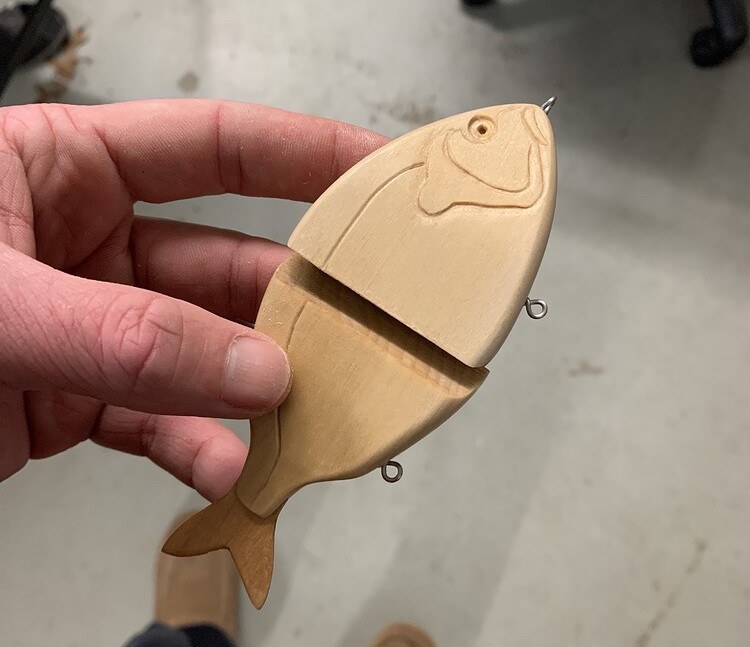
Kevin (03:51):
I know that the main purpose of our visit on today's podcast is to talk about your passion for building your own wood lures, so let's start with your passion for building those plugs from a freshwater perspective. Can you give us a little bit of a hint as to what you look to build when it, when it comes to stocking your freshwater tackle box?
Anthony (04:13):
Absolutely. So in the winter time, when it comes to fresh water, my teasing usually is after the albies have gone and things in saltwater slow down, so I transitioned into freshwater because here on the Cape we don't really get that much ice and these ponds will contain those hold over trout that the state provided throughout the spring and fall.
Anthony (04:42):
I started using some of the store bought stuff, like, for example, the Rapala jointed. It's a great lure, but for me it just doesn't cast well. In the winter, we got some winds and the jointed works really well at night, but during the day you kind of got to get your bait deeper and stay there because, I mean, they're not too active, they're a little sluggish.
Anthony (05:19):
So I decided to build something that will work in that situation. You know what I mean? So I decided to build one and then give it some decent weight, so when I cast it out... So when you're retrieving that bait, it suspends in the water column that I want it at, and for that time of the year, I want to suspend just off the bottom and a lot of store-bought lures didn't really do that, so I went to the drawing board and decided to mock up something and built it, and, I took it out, gave it a few tries. I mean, it took some trial and error to get it where I want it to be, but ultimately when I got it to where I wanted, it was very effective.
Lure Making as a Hobby/Passion
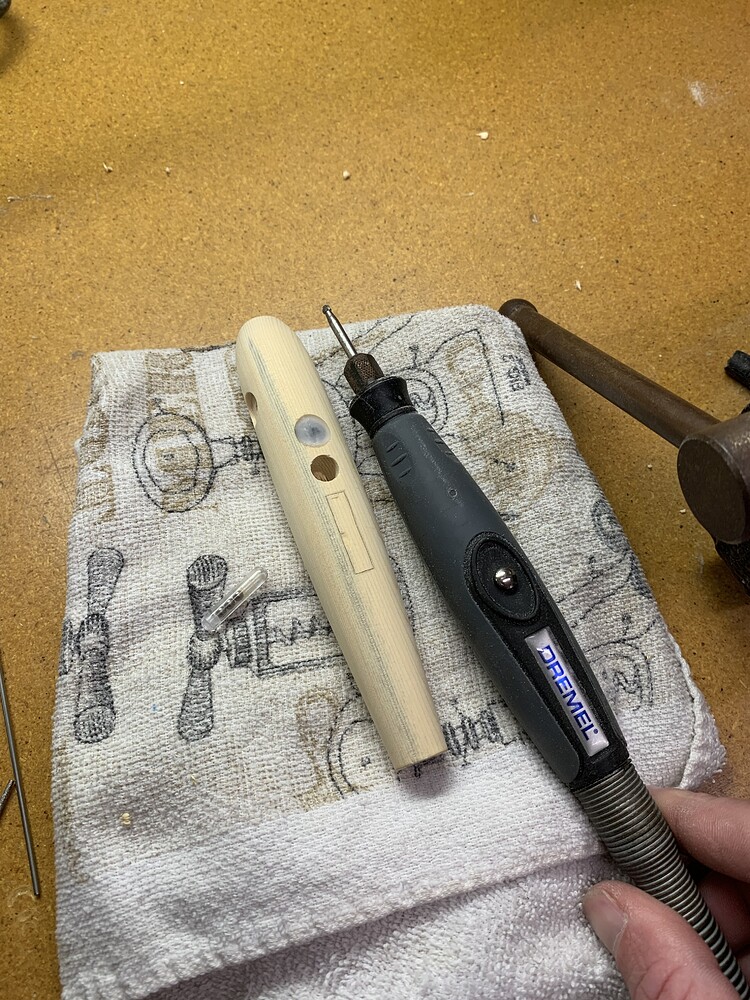
Kevin (06:13):
Let's talk about your fresh water, I'll say, fishing experience versus saltwater. Is it a pretty even split in terms of, I'll say, what you enjoy doing in terms of your fishing time, or is there one you prefer to the other?
Anthony (06:28):
I just love to be on the water, honestly. It doesn't matter to me if it's fresh, salt, river, or what have you. I don't really have a preference. Well, I mean, everyone has a preference on what type of fish they want to catch. But for me, I love freshwater fishing. I grew up freshwater fishing. My grandfather, my father, were on the bass tournaments, so I grew up doing that. And then my family bought a boat because we always visited the Cape, and that's when I really transitioned into saltwater when I was about eight years old. And for me, it's just really spending the time on the water and enjoying it.
Kevin (07:13):
When it comes to building your plugs and building your own plugs to stock your own tackle box, your pretty knowledgeable and passionate about creating plugs, whether it be for freshwater or saltwater.
Anthony (07:27):
I really needed to find a hobby. I mean, my passion was fishing. I used to build fishing rods, but when I moved to the Cape, I was like, all right, there's a lot of great rod builders out there, a lot of great plug builders also, but top water fishing for striper. I don't know. There's just something about it that always brought me back to the Cape and doing it, and looking at it, it seemed like something I'd really enjoy would be building my own plugs just to have that excitement and the enjoyment of catching a fish on something you created, you know?
Kevin (08:09):
I would say definitely for yourself and other folks that enjoy building their own plugs, it's probably an activity that kind of keeps you sane during quarantine and everything we've been through the last year.
Anthony (08:20):
Oh, for sure. It really helped me get through the times that we were having this past year, and currently, you know? Still can't really go out, do much. And like you said, it's kind of keeping me sane a bit, though it can be frustrating at times, there's certainly hurdles at plug building, a lot of throwaways and fire starters, I should say.
Anthony (08:49):
The enjoyment that comes in is when you finally spend all that doing it and it looks good, but nobody wants a paperweight, so when you go out and you finally use it and get that initial strike or pack a fish, just slapping it out of the water, there's no better feeling. You know what I mean? When you get that first hookup on something you spent so long creating and the fulfillment of it is just incredible. When you're able to do that for someone else... I don't really sell my plugs too often, but I do build for buddies here and there, and when they work for them, it just makes me feel incredible.
The MFCC Plug Building Forum
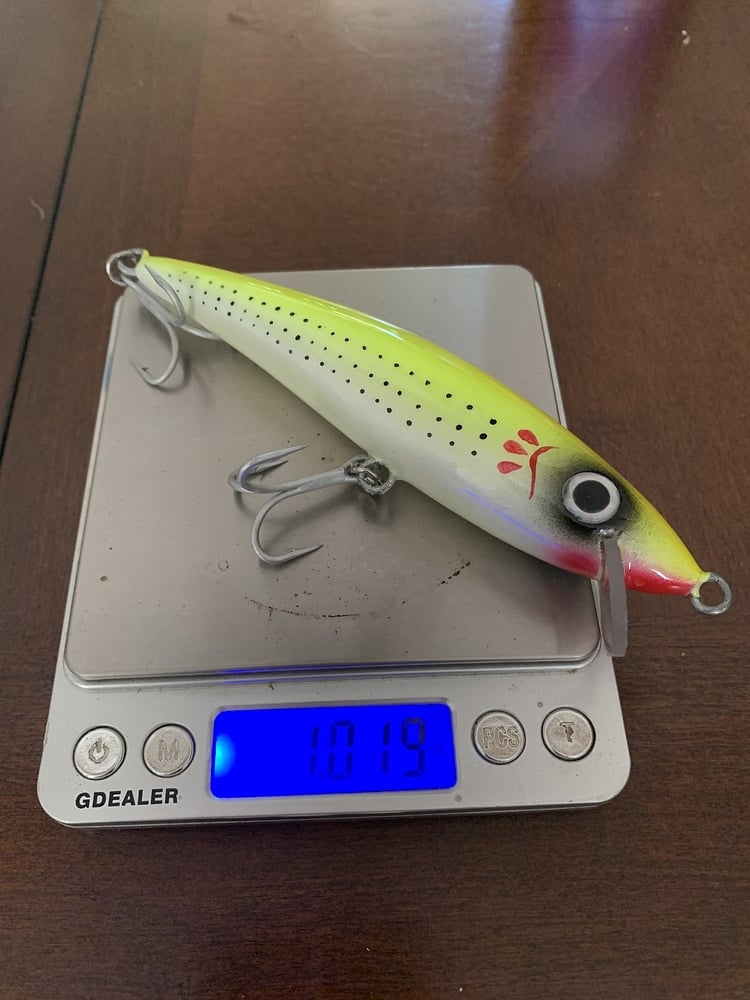
Kevin (09:39):
Let's talk about the My Fishing Cape Cod plug building forum. I know you're an active guy in there and I know that you contribute a lot to a thread called Lure Building Should Come With A Warning. Talk about why you enjoy that thread so much and going back and forth with folks.
Anthony (09:54):
Oh man, that thread's great, because it really should come with a warning. You get into it, you kind of get frustrated this, that, and the other, but it is very addicting. Once you complete your first lure and you are successful and taught on that lure, the possibilities become endless now. You want to build more. You want to build different ones. You want to make different color schemes, different weights, all that stuff.
Anthony (10:26):
Then on that thread, I mean, the builders involved in My Fishing Cape Cod are truly top notch. There are a lot of very, very talented builders on My Fishing Cape Cod. And that thread is great because I mean, I personally have only been plug building for maybe four years now, and so I admit it, I don't know everything there is to know about plug building. So you go onto that thread, ask questions, you get an answer within a day or two, max. And everyone's really open with it. And it's just a really fun thread to see what other people come up with because, like I said, there's some truly talented people on My Fishing Cape Cod.
Kevin (11:25):
Can I give you a chance real quick to give a shout out to some other MFCC members that you go back and forth with on that thread and in the forum?
Anthony (11:32):
Shout out to Mike Fixer, and then even seeing some of the other stuff that guys are coming up with, like the soft plastic and jig heads. I think that was Tyler that was coming up with that. And those look great for the canal. I forgot who posted it recently, but the 3D printed one is a really neat idea. So I'm looking forward to what those guys have coming out. But I've gotten a lot of helpful hints, mostly from Dan Kenny. He's been really helping me out a lot.
The Wooden Lure Making Process
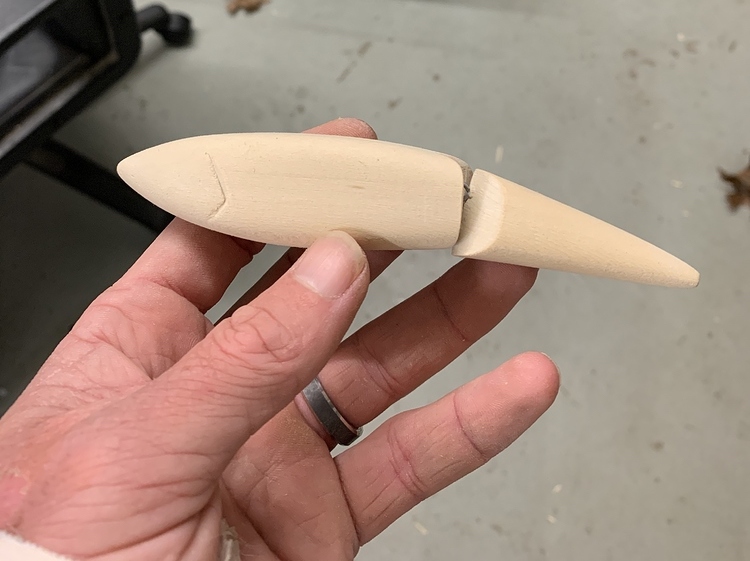
Kevin (12:06):
Let's talk about the process of building your own wooden lures. And with that idea, I want you to be able to share with folks, I know you do in the forum, share with folks some maybe tips and steps to your process who might help other people who might be intimidated by maybe starting trying to build their own gear. But with that being said, share as much as you feel like. I don't need you giving away all your state secrets, but basically if you could just talk about your process with the hope of it maybe helping other folks who are listening to this podcast.
Anthony (12:43):
For sure. So, I mean, the process at the beginning is, what kind of plug do you looking to build really? And then how much are you willing to spend on it? You know what I mean? Because it can be expensive at times. If you don't have a lathe, making those pencil poppers and things like that can be a little more tricky doing it by hand. And then if you're building a glide bait or something like that, hand carved is usually the route I take and I find it to be a little on the cheaper side.
Anthony (13:26):
I started off trying little hand carved lures to see if I enjoyed building because it was the cheaper route, and then I had the lathe for initially building cork and EVA handles for fishing rods, and on YouTube saw that it works great for building top water plugs and whatnot that way.
Anthony (13:54):
But, like I said, first off you want to figure out what kind of plug you want to build. And then the type of wood is also the factor that I personally take in to which type of bait I'm going to build. For example, if I'm doing a hand carved bait, I like to use balsa or basswood. And the reason for that is because those are softer woods, which make them easier to hand carve if you're trying to get more detail into the bait, that's the type of wood you can use an Exacto knife or a utility blade to really get in there and carve out the details.
Anthony (14:46):
So there's wood, and then another big thing, for me personally, my favorite part is painting.
Kevin (14:56):
That's what I was going to ask you about, the painting and the creativity that goes into that has got to be a lot of fun.
Painting The Lures
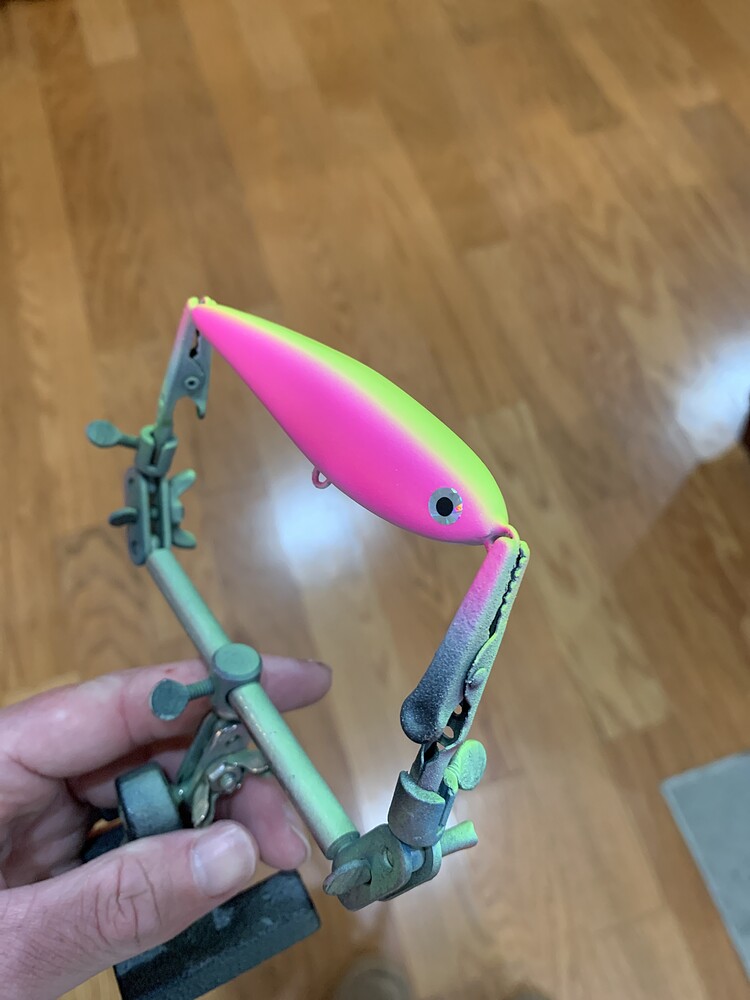
Anthony (15:03):
That is honestly one of my favorite parts of it. I love to draw and whatnot, so when it comes to painting the plug, it's really one of my spots that I really, for me, I feel like I excel in just because I really enjoy that part. I don't know how to put it. But for that, I use an airbrush. It gives me the ability to go in there, get some detail, do some scale patterns, have a nice fade between or a nice transition between the top of the plug down to the shoulders and then down to the belly. You know what I mean? You got that nice, smooth, there's no choppiness to the color.
Anthony (15:55):
But if you're on a budget, don't get me wrong, you can easily go and just get spray paint and work your magic that way. It's going to be a little hard to control the amount of paint coming out because on an airbrush you can set your PSI and everything and really control the amount of paint coming out.
Anthony (16:16):
After paint, another must have, I guess, maybe I should just be doing must haves, you know what I mean?
Kevin (16:29):
That's okay.
Epoxies for Protecting The Lure

Anthony (16:29):
You have to have an epoxy. You want to protect all the work you just put in. But there's a few different kinds of epoxies out there that you can use, and a few, for example, are... What I use is Envirotex lite, and it's a two part epoxy and you have to have a drying wheel because if you just brush on the epoxy, it's going to drip. And it takes about 24 hours to fully cure, 48 hours to really fully cure, and if you don't have that drying wheel you're just going to have one sagged epoxy lure, you know what I mean?
Anthony (17:25):
Then there's other epoxies that are UV cured. So a lot of guys will make a UV tank, airtight with black lights and whatnot, and then they'll use that, they'll paint on the epoxy that way or brush on, for that matter, the epoxy that way, and then hang it or let it drip dry for a little bit and then hang it inside of that UV box and it is a much quicker turnaround for a cure time than the route I go.
Anthony (18:05):
Then there's another one called a diamond coat, and it's a dip epoxy, so all you got to do is take your bait, dip it in there, let it drip dry, and then let it hang and cure that way. But you can't do that if you have it through-wire, you know what I mean? You can't go that route if you have a through-wire bait pencil, you know what I mean, how it's through-wired and it's hollow through? If you were to dip that, all of that would fill with epoxy [crosstalk 00:00:00].
Kevin (18:41):
With the epoxy.
Anthony (18:42):
You got to go a different route for those. But a glide bait is still a through-wire, you know what I mean? So you can dip that because there's not nose grom, it's belly grom and that through-hole, technically it's still a through-wire, but there's not that through-hole that will fill up.
Wooden Lure Making Challenges
Kevin (19:01):
Your favorite part, or the most rewarding part, for you is the design, the painting, your creativity comes to fruition there and your vision starts to take shape, but I know that there's probably a lot of frustrating things that go on during this process for you. So talk a little bit about some of the challenges and maybe how some folks that are just starting off can hopefully navigate and avoid those challenges a little bit.
Dull Tools vs. Sharp Tools
Anthony (19:25):
Challenges that I've come across so far, if you're out there and you do have the lath and you're working it that way, I would say a big thing is to have those lathe chisels or lathe tools to be as sharp as you can. Because I mean, when you go in there with a dull tool, it'll chunk out a lot, it'll chunk out the lure, because, I mean, you're not getting that clean cut shaving off the layers.
Anthony (19:59):
Then with that, you follow up, obviously, with your sandpaper to make it as smooth as possible. So I would say if you're going that route really have a good set of lathe tools, you know what I mean? It's really going to make it a lot more enjoyable because when you're making passes on the wood, it really chisels it like butter versus really trying to do more, you know what I mean? You're really trying to gouge it out with a dull tool and it can be very frustrating. So getting a good set of those will definitely help.
Exacto Knives
Anthony (20:40):
Also, if you're going the hand carved route, again, having a sharp Exacto knife or a sharp utility blade makes a world of difference just from how sharp they are and how clean they make the cut, because I've gone in on a lure, when you're doing good, doing good, and everything's like, oh man, this is going to be great, it's coming out great, and then one little thing ruins it, you know what I mean? And it's like, crap. I just spent a week on the other half of it and it literally took me five seconds to destroy the whole thing. So having the proper tools and keeping those tools sharp are really, really key.
Air Bubbles
Anthony (21:32):
Then just making sure your epoxy finish is good. And then having a blow torch of some sort to get rid of as many air bubbles as you can in the drying process. I know not every time you're going to get a perfect finish, there will be some times where you have an air bubble here and there, but that also depends on if you want to... I mean, you can get rid of it, wet sand it, and then re-epoxy, but sometimes, well, for me, if I'm fishing it, an air bubble here and there doesn't really bother me too much, but if I'm giving it to a friend or something of that sort, I'll really try to hand sand it down and try to make it as smooth as possible.
Kevin (22:24):
I know that Ryan wanted me to ask you about a couple of plugs in particular here, the albie crack and the herring swimmer. Can you give us the stories behind those two plugs?
Anthony's "Albie Crack" Creation
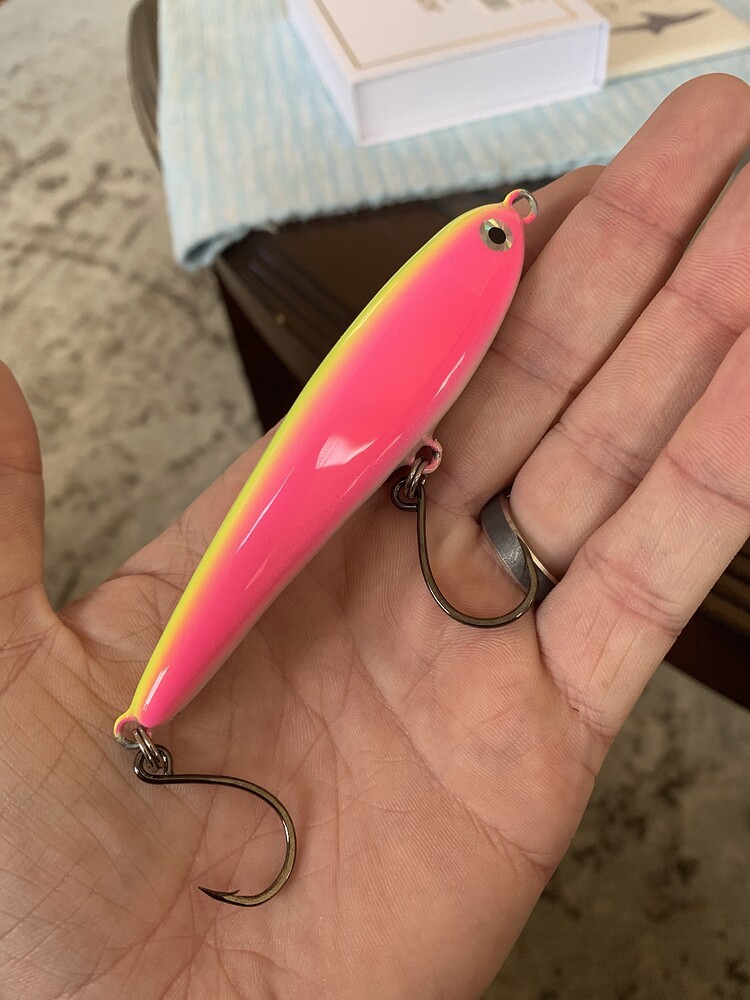
Anthony (22:35):
The albie crack. Who doesn't love fishing for albies? I know there's a lot of guys out there that enjoy it, guys and girls, that go out and they really, really enjoy fishing for albies, and myself included. And I just wanted to make something a little different, I guess, because when I fish for them I mainly throw an epoxy or a fly, and so I'm sitting there over the winter, I'm just like, kind of really want to throw some wood at albies.
Anthony (23:22):
I drew up a little bait fish on a piece of paper, brought it, I use basswood for it, so hand carving it was really easy, and put a few weights in there. And then the rest is kind of history with that. And then the paint scheme was a no-brainer for me, that albie crack steam, I don't know, it just seems to work and produce.
Anthony (23:52):
I did the pearl bottom fluorescent pink sides and a fluorescent yellow top, and I took it out and actually tested it shortly after I built it and it works just like in epoxy, except for obvious it's not going to sink all the way to the bottom. The way I mean it works just like an epoxy is that if you reel it at a fast enough speed, it will dart across the surface just like an epoxy. And if you go a little bit slower, it'll stay a little subsurface and cut back and forth underneath the surface, just like if you were to slow down an epoxy a little bit.
Anthony (24:37):
I was really pleased with the way that one turned out. Try it on schoolies, but I will be throwing it at albies when they'd come back around.
Anthony's Jointed Herring Swimmer
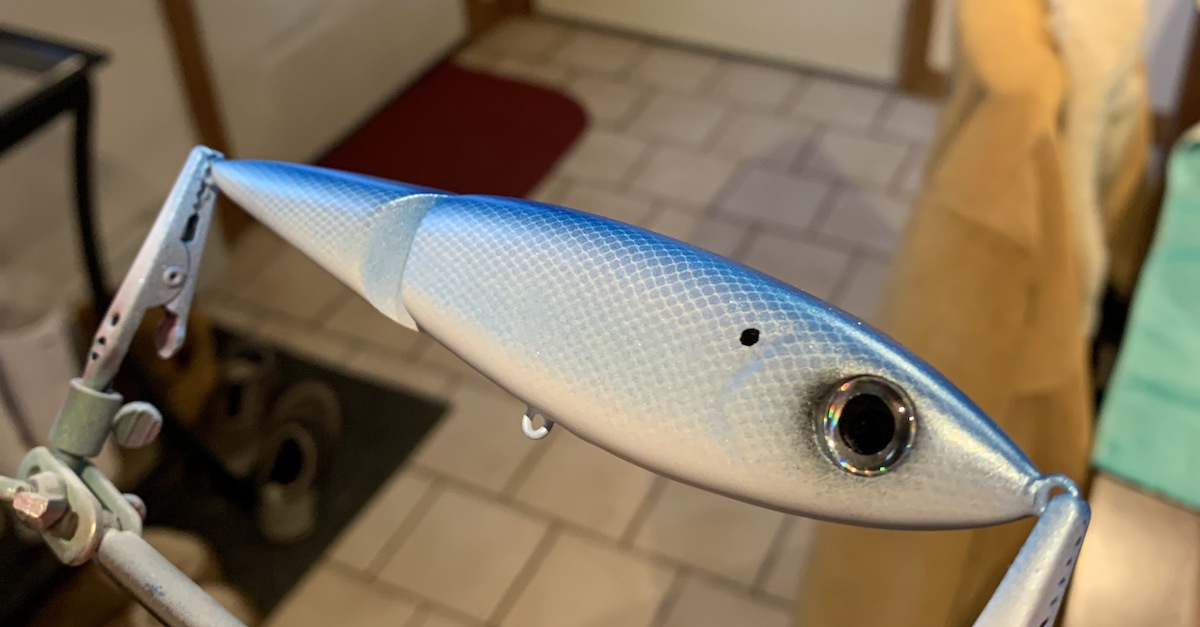
Anthony (24:47):
Then the herring jointed originally was going to be a glide bait one piece, but I've already built a glide bait one piece in the past and I wanted to, again, step out of my comfort zone and try something different, so I made some measurements and made a cut down the middle to make a jointed. And I've made jointed in the past, but they were for fresh water. This one is obviously going to be for salt water.
Anthony (25:27):
I wanted to step out of my comfort zone, like I said, and build a swimmer type lure, kind of like the magic swimmers and glide baits that are jointed and stuff like that. And I went with a pretty common paint theme. I mean, one of our main bait fish here are herring and I am kind of impatient, so my color scheme was like herring because our first arrivals and first fish are usually chasing herring and so that's why I kind of went with that paint scheme for that one. But not to say it can't work in summer, fall. I think it's just going to be the way, putting it in front of the certain fish, just like any other bait. I'm really, really excited to see if they can produce a few fish for me this year.
The Squid Bomber: Anthony's Favorite Plug
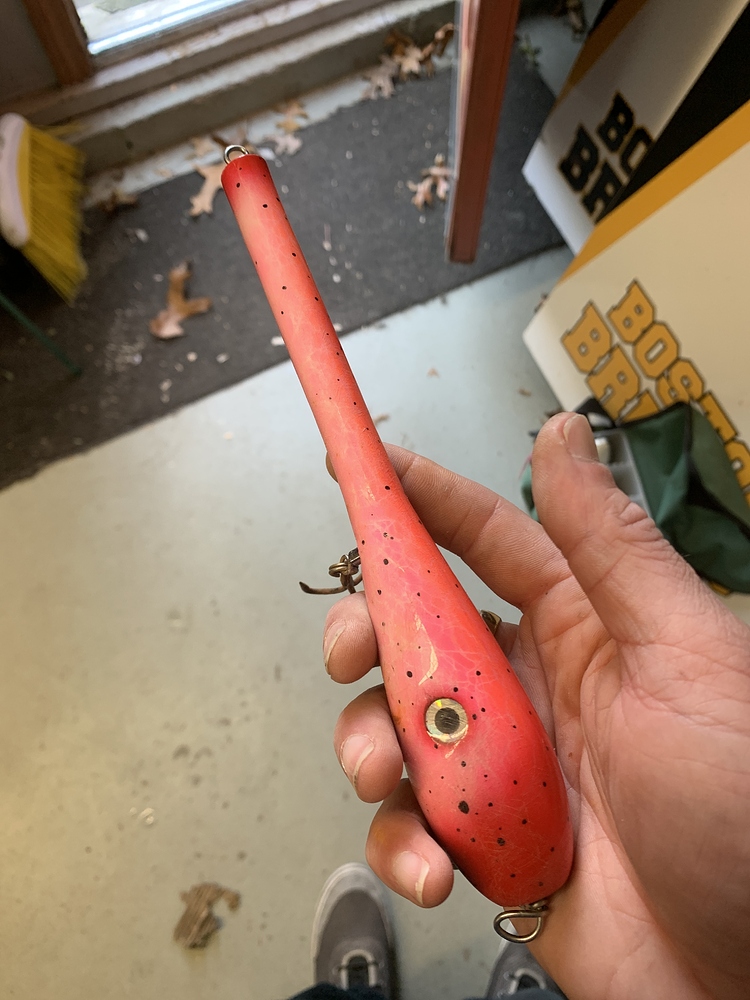

Kevin (26:32):
Last question from me, and I think some of the other members would probably want to ask you this question as well. What's your favorite plug that you make, or just your favorite plug that you use, either one, or one of each, when it comes to striped bass?
Anthony (26:49):
When it comes to striped bass my favorite plug to use is the squid bomber I built a few years ago. I think it was three years ago now. And that was hands down my top producer for recently and in the past. I built some for a couple of buddies and they've been working really well for them. So for saltwater, I would definitely have to say it's that squid bomber I built. It's really put some big fish on the deck for me.
Anthony (27:30):
If I had to say a second close would be the spook. Any any type of spook. I just love fishing spooks. I love their action. And with that, I've actually built a few new spooks, prototypes right now, with rattles in them, so hopefully that low frequency sound will actually produce more bite just like on any other spook lure that has a plastic spook that has rattles in it. I kind of wanted to step out of the regular just wooden spook, and then just add that rattle to it, make it a little more attractive, I guess.
Kevin (28:18):
Well, thanks very much Anthony for sharing all this time, information, years of expertise, and I'm sure a lot of the members listening to this podcast really appreciate it. And I also wanted to thank you for being such an active contributor in the MFCC forum. Thank you for all that you do for My Fishing Cape Cod.
Anthony (28:36):
The pleasure's all mine, Kev. I've really enjoyed it. Like I said, I love My Fishing Cape Cod, the community in there, Ryan, all you guys, you guys do such a great job. Thank you for having me.
Kevin (28:49):
Thank you, Anthony Beesaw for joining us here on the My Fishing Cape Cod Podcast. It was a really informative chat with Anthony and it was a pleasure to hear about his true passion for lure building, especially when it comes to working with wood.
Kevin (29:04):
Hopefully all of you listening to the podcast, picked up some tips and maybe some inspiration to give lure building a try. Also hope you enjoyed the format of this podcast, it was more like an interview with Anthony as opposed to our weekly fishing report. So you can be on the lookout for our usual MFCC podcast with the fishing reports, as well as the special MFCC podcasts that are more of an interview format.
Kevin (29:29):
Hopefully we're able to keep the podcasts coming fast and furious here in 2021. Hope you enjoyed today's program. That's going to put the wraps on episode two for 2021. This is your host, Kevin Collins, signing off. And until we chat again, tight lines and take care.


